|
If bacteria were beachballs... 10-6 meters per meter |
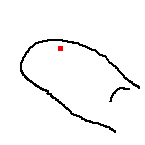
1 nm |
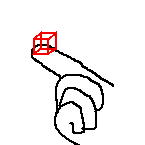
10 nm |
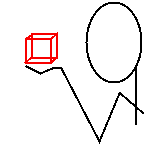
100 nm |
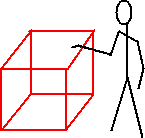
1000 nm |
||||||
10-9 m
|
10-8 m
|
10-7 m
|
10-6 m
|
||||||
|
Atoms are around 0.2-0.3 nm In gas (STP), atoms are ~3 nm apart, and mean free path is ~100 nm. |
large molecules proteins
Cell Membrane LDL bloodstream colesterol carrier is a 22 nm ball of fatty stuff (1,500 colesterol with fat tails attached) surrounded by a single lipid layer (800 lipids and 500 regular colesterols). And a plug of docking hook protein. |
Virus

 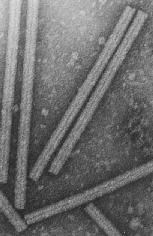 
|
|
||||||
|
|||||||||
Comments encouraged. - Mitchell N Charity <mcharity@lcs.mit.edu> |
Doables:
Flesh out.
Nanocrystals (grain sizes ~ 1-10 nm) are a delightful
intermediate between atomic and bulk behavior.
Lysosomes/microbodies vary in size from 0.2 to 2 um.
phospholipid bilayer, miscelle
bacterial memb/wall crosssection.
viral spikes (herpes, 100nm isoc) are 10nm long
SET wire ~16nm, dot ~12.
Notes:
Digitized Electron Micrographs
The ball-like animal viruses from Electron Micrographs of Animal Viruses.
The stick-like plant viruses from Electron Micrographs of Plant Viruses:
Tobacco Mosaic Virus x300,000 RNA, non-enveloped, monopartite
Barley Stripe Virus x300,000 RNA, non-enveloped, tripartite
Maize Mosaic Virus x150,000 RNA, enveloped (bottom tubular)
Maize Streak Virus x300,000 DNA, non-enveloped (tiny double puffball)
150 dpi 9.5 x 7.5" (0.2413 x 0.1905 m)
150 dpi 0.00666"/dot 1.693x10^-4 m/dot
x3e5 0.6 x10^-9 m/dot 100nm = 167 dots
(Thus dot is how many atoms? :)
Shrunk by x2 to match animal viruses.
I wonder if they have the mag quite right on the Maize Streak - it seems small...
Should redo screen w 72 dpi?
Typical screen's 75 dpi(?) is 3.387e-4 m/dot ie 0.3387 mm/dot
Typical screen "real" scale: 0.3387 mm/dot 0.3387 nm/dot
10 nm = 29 dots, 100 nm = 295 dots
Viral 100 nm bar is 73 dots, so 1.4 nm/dot
Bacteria structure
Calling atoms 10-9 m is pushing it, as many fall below
the 3.16 Angstrom threshold down into order 10-10.
Nanophase materials[link broken] have 1-100 nm grain sizes.
Retroviruses are 80 to 130 nm.
Carbon nanotubules are a few nm in diameter and many um long.
(Nature 98 Jan 28 p466)
An ATP synthase (proton pumping <-> ATP) with spinning rotor
10nm diameter and about 20nm high. (Nature 98 Jan 28 p510).
History:
2003-Feb-03 Repaired links - 3 fixed, 1 flagged, 1 left (bocklabs).
2001.Apr.20 Added link to `How Big Are Things?'.
1998.Jun.17 Corrected error with magnitude boundaries (3.333->3.162).
1997.Oct.07 Added LDL.
1997.Aug.19 Removed some viruses to speed loading.
Other meta info on zero magnification page.